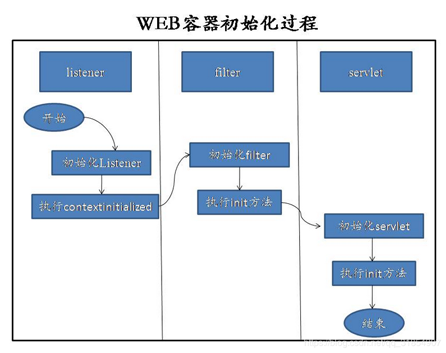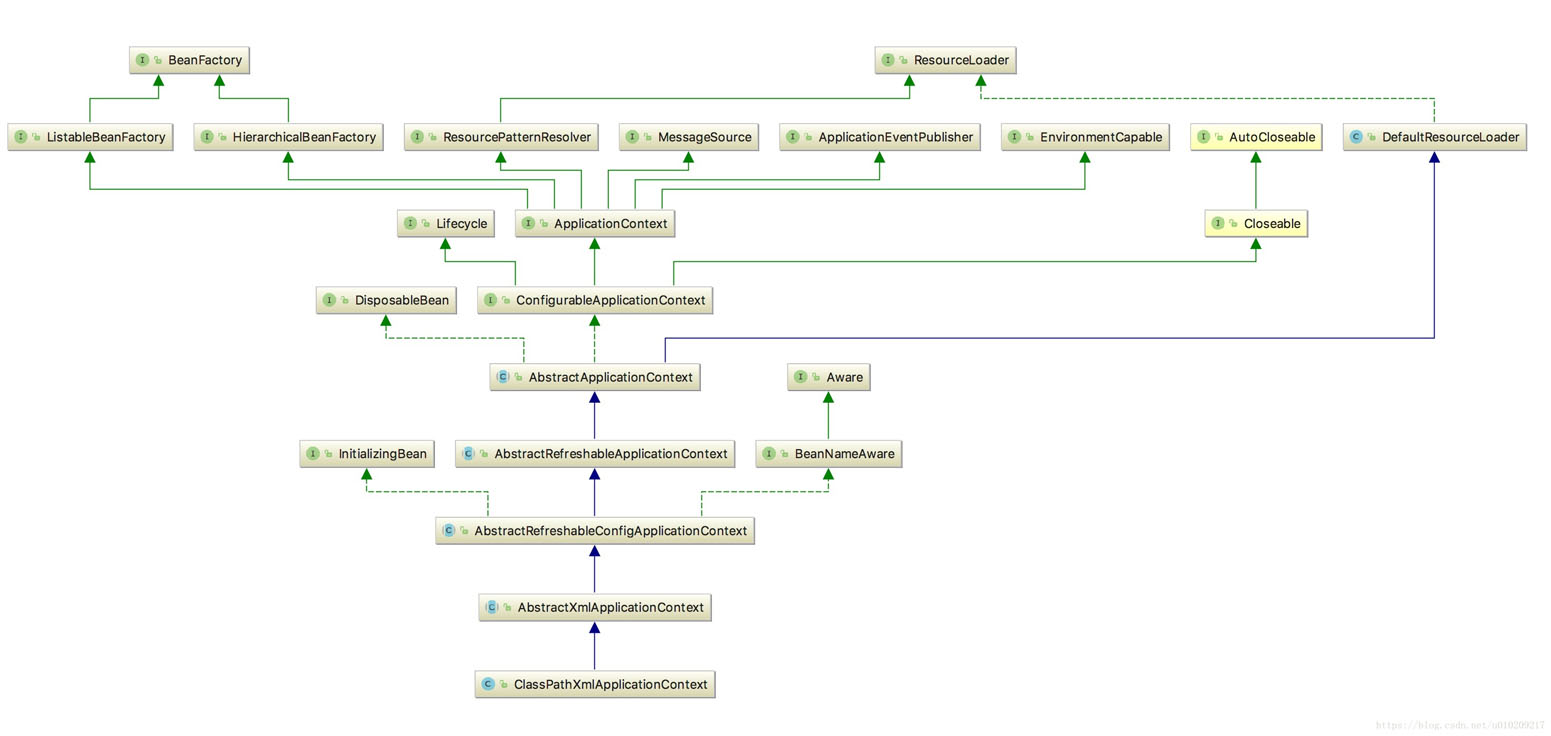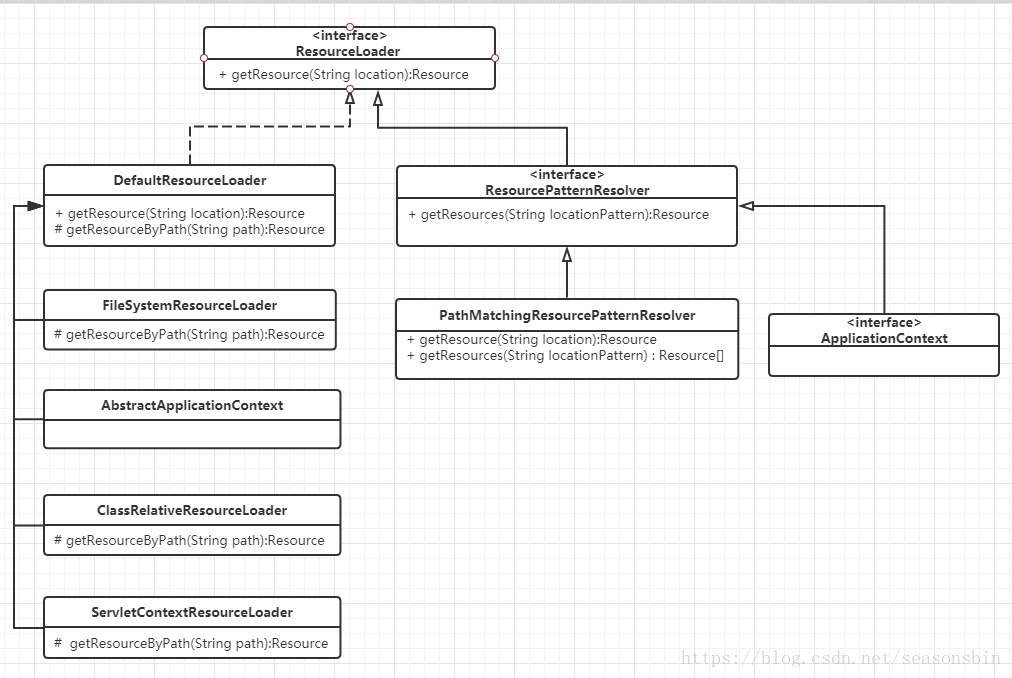这篇文章主要为大家展示了“如何启动Spring项目”,内容简而易懂,条理清晰,希望能够帮助大家解决疑惑,下面让小编带领大家一起研究并学习一下“如何启动Spring项目”这篇文章吧。
1、Spring 项目放到web项目容器中(Tomcat、Jetty、JBoss)
以通用的Tomcat为例

2、项目容器启动时需要加载读取web.xml配置文件
如下图:

3、容器首先会去读取web.xml配置文件中的两个节点:<listener> </listener>和<context-param> </context-param>
说明:
tomcat在启动web容器的时候会启动一个叫ServletContextListener的监听器,每当在web容器中有ServletContextListener这个接口被实例化的时候,web容器会通知ServletContextListener被实例的对象去执行其contextInitialized()的方法进行相应的业务处理;
而spring框架在设计的过程中ContextLoadListener这个类实现了ServletContextListener这个接口,因此每当有ContextLoadListener这个类被实例化的时候,web容器会通知Spring执行contextInitialized()这个方法,从而进行spring容器的启动与创建的过程中;
4、ContextLoaderListener中的contextInitialized()进行了spring容器的启动配置,调用initWebApplicationContext初始化spring容器;
@Override public void contextInitialized(ServletContextEvent event) { initWebApplicationContext(event.getServletContext()); }public WebApplicationContext initWebApplicationContext(ServletContext servletContext) { //Spring 启动的句柄,spring容器开始启动的根目录 if(servletContext.getAttribute(WebApplicationContext.ROOT_WEB_APPLICATION_CONTEXT_ATTRIBUTE) != null) { throw new IllegalStateException("Cannot initialize context because there is already a root application context present - check whether you have multiple ContextLoader* definitions in your web.xml!"); } else { Log logger = LogFactory.getLog(ContextLoader.class); servletContext.log("Initializing Spring root WebApplicationContext"); if(logger.isInfoEnabled()) { logger.info("Root WebApplicationContext: initialization started"); } long startTime = System.currentTimeMillis(); try { //处理spring容器是否已经创建(只创建没有创建spring的各个bean) if(this.context == null) { this.context = this.createWebApplicationContext(servletContext); } if(this.context instanceof ConfigurableWebApplicationContext) { ConfigurableWebApplicationContext cwac = (ConfigurableWebApplicationContext)this.context; if(!cwac.isActive()) { if(cwac.getParent() == null) { ApplicationContext parent = this.loadParentContext(servletContext); cwac.setParent(parent); } //Spring容器创建完成后,加载spring容器的各个组件 this.configureAndRefreshWebApplicationContext(cwac, servletContext); } } servletContext.setAttribute(WebApplicationContext.ROOT_WEB_APPLICATION_CONTEXT_ATTRIBUTE, this.context); ClassLoader ccl = Thread.currentThread().getContextClassLoader(); if(ccl == ContextLoader.class.getClassLoader()) { currentContext = this.context; } else if(ccl != null) { currentContextPerThread.put(ccl, this.context); } if(logger.isDebugEnabled()) { logger.debug("Published root WebApplicationContext as ServletContext attribute with name [" + WebApplicationContext.ROOT_WEB_APPLICATION_CONTEXT_ATTRIBUTE + "]"); } if(logger.isInfoEnabled()) { long elapsedTime = System.currentTimeMillis() - startTime; logger.info("Root WebApplicationContext: initialization completed in " + elapsedTime + " ms"); } return this.context; } catch (RuntimeException var8) { logger.error("Context initialization failed", var8); servletContext.setAttribute(WebApplicationContext.ROOT_WEB_APPLICATION_CONTEXT_ATTRIBUTE, var8); throw var8; } catch (Error var9) { logger.error("Context initialization failed", var9); servletContext.setAttribute(WebApplicationContext.ROOT_WEB_APPLICATION_CONTEXT_ATTRIBUTE, var9); throw var9; } } }5、spring容器创建完成后,准备开始实例化加载bean,Spring容器创建完成后,准备向spring容器中加载bean 使用configureAndRefreshWebApplicationContext(cwac, servletContext); 完成bean的加载;
protected void configureAndRefreshWebApplicationContext(ConfigurableWebApplicationContext wac, ServletContext sc) { if (ObjectUtils.identityToString(wac).equals(wac.getId())) { // The application context id is still set to its original default value // -> assign a more useful id based on available information String idParam = sc.getInitParameter(CONTEXT_ID_PARAM); if (idParam != null) { wac.setId(idParam); } else { // Generate default id... wac.setId(ConfigurableWebApplicationContext.APPLICATION_CONTEXT_ID_PREFIX + ObjectUtils.getDisplayString(sc.getContextPath())); } } wac.setServletContext(sc); String configLocationParam = sc.getInitParameter(CONFIG_LOCATION_PARAM); if (configLocationParam != null) { wac.setConfigLocation(configLocationParam); } // The wac environment's #initPropertySources will be called in any case when the context // is refreshed; do it eagerly here to ensure servlet property sources are in place for // use in any post-processing or initialization that occurs below prior to #refresh ConfigurableEnvironment env = wac.getEnvironment(); if (env instanceof ConfigurableWebEnvironment) { ((ConfigurableWebEnvironment) env).initPropertySources(sc, null); } customizeContext(sc, wac); wac.refresh(); }说明:
configureAndRefreshWebApplicationContext中加载spring的配置文件,即web.xml中读取<context-param></context-param>中加载到Spring的配置文件,即:classpath:/config/applicationContext.xml;
或
通过以下代码加载spring配置
public class Application{ public static void main(String[] args) { ClassPathXmlApplicationContext ctx = new ClassPathXmlApplicationContext("/context.xml"); ctx.start(); } }此处略过如何调用DefaultResourceLoader
顶级接口ResourceLoader仅提供了一个getResource(String location)方法,可以根据一个资源地址加载资源文件,资源地址的表达式可以是以下几种:
--1. classpath:前缀开头的表达式,例如: classpath:smart-context.xml
--2.“/”开头的表达式,例如:/WEB-INF/classes/smart-context.xml
--3. 非“/”开头的表达,例如:WEB-INF/classes/smart-context.xml
--4. url协议,例如:file:/D:/ALANWANG-AIA/Horse-workspace/chapter3/target/classes/smart-context.xml


Spring提供了实现类DefaultResourceLoader,DefaultResourceLoader在实现了以上列举的功能基础上,还为开发者提供了自定义扩展接口ProtocolResolver,开发者可实现该接口定制个性化资源表达式,代码如下:
@Override public Resource getResource(String location) { Assert.notNull(location, "Location must not be null"); for (ProtocolResolver protocolResolver : this.protocolResolvers) { // 1 Resource resource = protocolResolver.resolve(location, this); if (resource != null) {return resource;} } if (location.startsWith("/")) {return getResourceByPath(location);} //2 else if (location.startsWith(CLASSPATH_URL_PREFIX)) { //3 return new ClassPathResource(location.substring(CLASSPATH_URL_PREFIX.length()), getClassLoader()); } else { try { // Try to parse the location as a URL... URL url = new URL(location); //4 return new UrlResource(url); } catch (MalformedURLException ex) { // No URL -> resolve as resource path. return getResourceByPath(location); //5 } } }步骤1,先用扩展协议解析器解析资源地址并返回。举个例子,咱们可以自定义资源解析器来完成带前缀“classpath:”的解析:
首先实现ProtocolResolver接口:
class ClasspathPreProtocolResolver implements ProtocolResolver{ private static String CLASS_PATH_PRE="classpath:"; public Resource resolve(String location, ResourceLoader resourceLoader) { if( location.startsWith(CLASS_PATH_PRE)) { return new ClassPathResource(location.substring(CLASS_PATH_PRE.length())); } return null; } }步骤2,假设location以斜杠开头,则调用该类中 getResourceByPath(String path)方法 ,代码如下:
protected Resource getResourceByPath(String path) { return new ClassPathContextResource(path, getClassLoader()); }步骤三,假如资源表达式以classpath开头,则截取除前缀calsspath:的路径,并做为ClassPathResource的构造参数,生成ClassPathResource实例后返回。咱们可以在web.xml中做如下配置:
<context-param> <param-name>contextConfigLocation</param-name> <param-value>classpath:/config/applicationContext.xml</param-value> </context-param>
6、通过refresh()内部的实现我们大致可以了解整个refresh()方法担负了整个Spring容器初始化和加载的所有逻辑,包括Bean工厂的初始化、post-processor的注册以及调用、bean的实例化、事件发布等。
以上是“如何启动Spring项目”这篇文章的所有内容,感谢各位的阅读!相信大家都有了一定的了解,希望分享的内容对大家有所帮助,如果还想学习更多知识,欢迎关注亿速云行业资讯频道!
免责声明:本站发布的内容(图片、视频和文字)以原创、转载和分享为主,文章观点不代表本网站立场,如果涉及侵权请联系站长邮箱:is@yisu.com进行举报,并提供相关证据,一经查实,将立刻删除涉嫌侵权内容。